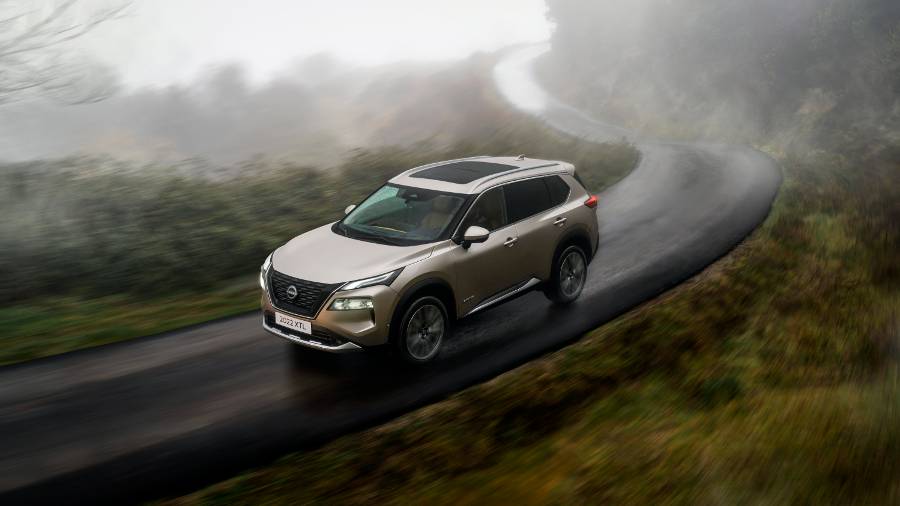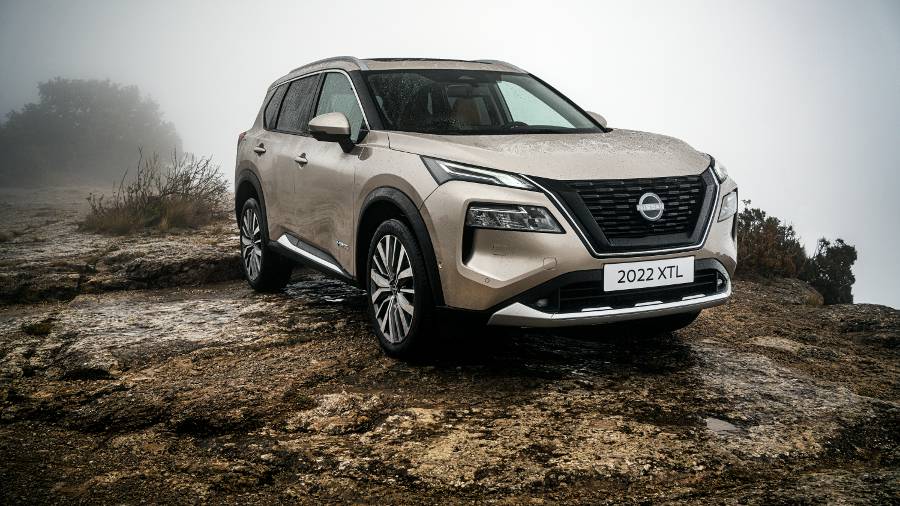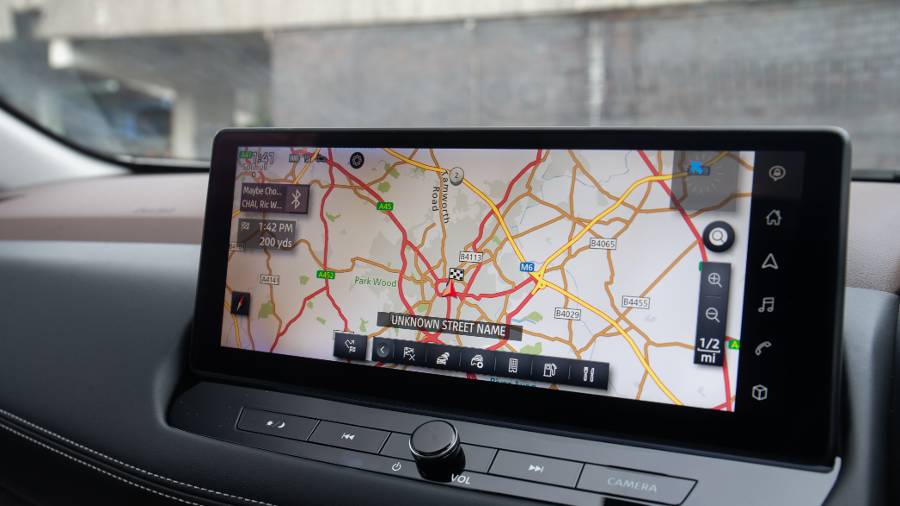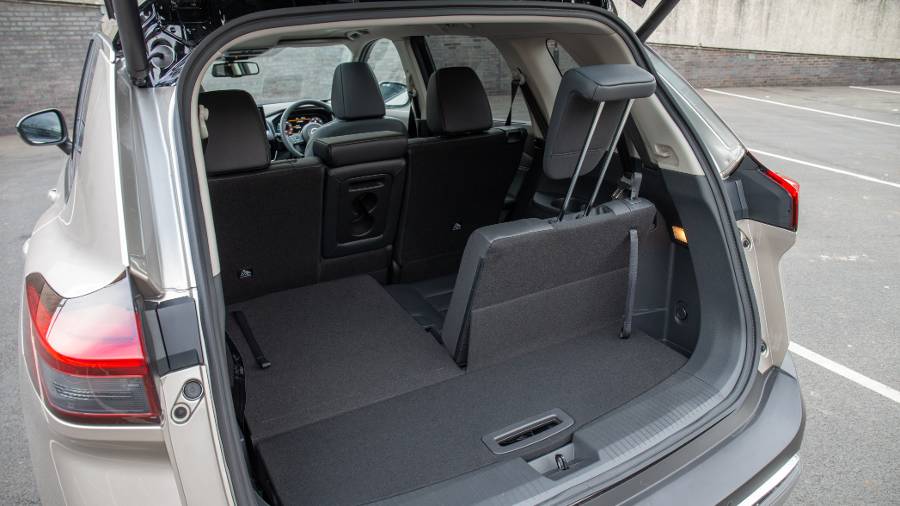Nissan X-Trail e-POWER Review
Introduction
With many crossovers to choose from, SUVs that can go off-road are in the minority nowadays. The Nissan X-Trail is one of the exceptions.
It has been around since the turn of the century and is now in its fourth generation, so it should improve on its predecessors considerably.
Upgrades to spaciousness, build quality and safety technology are among the highlights Nissan has promised. If you're looking to lease a rugged off-roader that’s slightly different from the usual suspects, then Nissan could have you covered.
Not only that, but introducing hybrid technology only serves to make things better – hopefully. It is also offered as a seven-seater version, and it’s the Japanese manufacturer’s largest SUV.
Practicality is expected to be a strong suit, then – but does it have show as well as go? That is what we’re aiming to find out.
Select's rating score* - 3.7 / 5
At a Glance
The Nissan X-Trail isn’t the prettiest car you can lease, and those hoping to wow people with its aesthetics may be best looking at the premium end of the market.

Nevertheless, it looks reasonably menacing, with chiselled air intakes that accommodate the bottom half of its split headlight arrangement.
Nissan’s now traditional diagonal grille features heavily, surrounded by chrome strips, while a smaller grille is decorated with a silver front splitter on our test car.
At the sides, there's a notable indentation at the bottom of the door. Meanwhile, the cladding and the gap between the wheels and the body suggest a vehicle that can cope with the more extreme angles of attack that off-roading will naturally provide.
At the rear, a roof spoiler adds a subtle overhang over the back window, but unusually, this spoiler also protrudes outwards from the sides of the rear window.
More silver is found towards the bottom, giving off a diffuser effect, sat on top of more rugged cladding.
Nissan's looks often divide opinion, and the X-Trail is no different. However, it’s certainly got character.

Key Features
The X-Trail is available in five different trims.
The entry-level Visia gets 18-inch diamond cut alloys, black cloth upholstery, DAB radio, manual air conditioning, leather steering wheel, a 7-inch digital driver’s display, front and rear LED lights and rear parking sensors.
The Acenta Premium grade adds front parking sensors, a rear-view camera, an eight-inch infotainment screen with wired Apple CarPlay and Android Auto, plus dual-zone air conditioning.
Nissan’s mid-range N-Connecta trim upgrades the infotainment screen to 12.3 inches, and adds wireless capability for Apple CarPlay and Android Auto. Meanwhile, the digital driver's display is also upgraded to 12.3 inches, as well as adding privacy glass, ambient lighting and roof rails.

The Tekna grade has 19-inch diamond cut alloys, a glass roof, a powered tailgate, a ProPilot Assist with SatNav, a 10.8-inch head-up display, and a wireless charger.
Then the top-of-the-range Tekna+ gets 20-inch diamond cut alloys, a premium Bose sound system and black quilted premium leather in the front seats.
There are three powertrains to choose from, all based on 1.5-litre three-cylinder petrol units.
The VC-Turbo 163 Mild Hybrid features a small electric motor which produces 163PS in combination with the engine, offering front-wheel drive only.
Alternatively, there are two self-charging hybrids – the single-motor e-POWER 204, which produces 204PS and is also front-wheel drive, while the dual-motor e-POWER 213 produces (surprise, surprise) 213PS, offering all-wheel drive.

The e-POWER versions aren't available in entry-level Visia trim. Still, we recommend setting your sights no lower than Acenta Premium unless you don't want an infotainment system.
The VC-Turbo works like any conventional engine. But, unusually, the engine in the e-POWER versions doesn’t drive the wheels at all – this is done exclusively by the electric motors.
The e-POWER engine is there solely to keep the batteries charged. So in effect, it's an electric car with an onboard generator, which happens to be the Nissan’s petrol engine.
This is an unusual setup, but it’s not unheard of.

Performance & Drive
The e-POWER 213 is what we’re focusing on – and although 213PS isn't a tremendous amount of power in a vehicle of this size, it's more than adequate in practice, getting from 0-62mph in 7.0 seconds.
When you start moving, there's a blip of torque from the electric motors.
Although it doesn't pin you back in your seat when you accelerate hard, the performance seems overkill in a car like this, which is unlikely to be leased by thrill seekers.
As a result, the premium you’ll pay for the top-of-the-range motor we're testing is arguably not worth it unless you need the off-roading capability or seven seats, given the e-POWER 204 only has front-wheel drive and five seats.

The VC-Turbo and the e-POWER 213 have five- and seven-seater options, though the VC-Turbo is only available with front-wheel drive.
Given the e-POWER 204 has only a 9PS deficit and is only a second slower to do 0-62mph, this is the one we’d go for, especially as it’s the most economical.
The entry-level VC-Turbo engine is best avoided, as it needs to be worked very hard to get any performance out of it. And when you do, it sounds pretty coarse, and you'll feel vibrations through the steering wheel when you push it.
It gets up to 62mph in 9.6 seconds, which is still more than acceptable. Still, it lacks the refinement of both the e-POWER variants and has an inferior hybrid system by comparison, so the fuel economy is worse, too.
The e-POWER variants sound untroubled and relatively calm. And thanks to their rare design (where the engine acts merely as a generator, as we mentioned earlier), the experience is much like driving an electric car but with an engine note.

We wouldn't call the e-POWERs quiet, but they sound better than the VC-Turbo.
The X-Trail’s suspension setup is soft and forgiving, making it supremely comfortable even on more challenging terrain.
Manufacturers who make their cars so absorbing often risk the vehicle never settling down, bouncing around on its springs from pothole to pothole. But there's no such behaviour on the X-Trail, which keeps its composure well.
Granted, it feels less well-planted than premium SUVs, but Nissan has done a fine job here.
You do lose some of the comfort if you have bigger alloys in higher trims, so sticking with 18-inch wheels is recommended. And if you pick a trim with bigger alloys, you can downgrade the size of them without charge.

Inevitably, the absorbing suspension means that the X-Trail isn't designed to be taken on bendy B-roads quickly.
There is limited feedback through the steering, which doesn’t weight up much in the bends. And, although the body lean is reasonably well controlled, go slightly too fast and you’ll be lucky to make it out of the corner due to understeer.
Don't let that put you off – we test vehicles to their limits, after all – and if you're driving normally, there'll be no problem.
But, if you want something that handles well and can be chucked around a corner enthusiastically, then the X-Trail is not the motor for you.

It excels off-road, though, tackling muddy fields and fords, while the excellent all-wheel-drive system easily deals with steep inclines.
Our off-road course wasn't challenging, and we don't imagine it's on par with a Land Rover Discovery if the going gets incredibly tough. Still, you'll be fine driving down a slippery mud track following a deluge of heavy rain.
Suppose you do opt for the e-POWER models. In that case, you also get a feature called e-Pedal - the X-Trail's regenerative braking system, which recovers the engine under deceleration to put some charge back into the batteries.
This means you can get most of your stopping power by lifting off the accelerator, leaving you to tap the brake pedal to bring the car to a halt.

Running Costs & Emissions
The X-Trail e-POWER 213 that we’re driving manages 42.2 to 44.8mpg depending on trim, producing 143 to 152g/km of CO2.
By comparison, the e-POWER 204 manages 45.6 to 48.7mpg, emitting 132 to 141g/km of CO2.
Opting for the VC-Turbo returns 37.2 to 39.8mpg, producing 161 to 172g/km of CO2.
That further strengthens the argument to go for the e-POWER 204 (again, assuming you can make do with five seats and front-wheel drive).
The e-POWER 204 will be the best one to go for when it comes to a choice for a company car, too, as its lower emissions will make it slightly cheaper for Benefit In Kind tax purposes.
That said if you are looking to lease a company car, choosing a plug-in hybrid or a fully electric vehicle is a no-brainer, given they're in the bottom tax bands.

Interior & Technology
The interior is impressive, especially in our test car, which features a light brown upholstery.
Admittedly, you may be less impressed if you opt for the all-black cabin, as there's not much silver trim to break up the otherwise single-toned colour scheme.
The build quality feels good, and most switches are pleasant to touch.
There is also plenty of plush materials, and you'd soon forget you were behind the wheel of a Nissan – it feels at least a step upmarket from that. Granted, there are some cheaper plastics, but most of them are reasonably well hidden.

Everything inside is logically positioned, though, with buttons on the thick steering wheel and the infotainment screen poking out of the top of the dashboard.
The infotainment system in our Tekna test car is the larger 12.3-inch version, which is responsive with a reasonably intuitive menu layout.
Admittedly, the display resolution could be better as rivals have sharper graphics. Still, it's a relatively good system – and it comes with a rotary dial, which makes using it on the move very easy.

Thankfully, Nissan has resisted the temptation to integrate the climate controls within the touchscreen, instead leaving them with physical dials which sit beneath the infotainment system.
Our test car has the Bose sound system – an optional extra, although you’ll get it as standard on the top-of-the-range Tekna+ trim.
It does improve the sound quality, so if being able to listen to your music with crisp acoustics matters to you, this may be something to consider.

Space & Practicality
The X-Trail provides a relatively high driving position, which helps in terms of visibility out of the front windows.
If you want to get even higher, there's height adjustment in the driver's seat, too.
Adjustable lumbar support is standard on Acenta Premium trim upwards. However, finding a comfortable driving position is even more accessible in our Tekna-trimmed test car, as we get electric adjustment in the front seats.
The memory function also means you can save your seat position, which is handy if you regularly share the driving with someone else.

The visibility out of the rear could be better, as the rear pillars are thick and vertical. Meanwhile, the shape of the rear windows means even more space is given up to the bodywork, limiting your view further.
Rear parking sensors mitigate the issue and are included as standard across the range, while Acenta Premium trim adds parking sensors at the front and a rear-view camera.
In terms of space, you shouldn’t be struggling.
While you'll have slightly more room in some of the Nissan X-Trail's competitors, the front has plenty of space to sprawl out and make yourself comfortable.
Very few people will be complaining in the middle row of seats. The central chair can fold down to create a spacious armrest for those in the outer seats – and they can slide forwards and backwards in the seven-seaters, too.

If all three seats are occupied, there's still plenty of room, while it's easy to access the rear pews.
The rears can recline, which means it's more spacious than most seven-seaters if you're sat in the back row. But it's still not quite accommodating enough to fit fully-grown adults comfortably.
You will also find lots of storage space inside the X-Trail, with cupholders, large cubbies and decent-sized door pockets.
The boot space in the X-Trail measures 585 litres with the rear seats down in five-seater versions but only 485 litres in seven-seater versions, which is less than in a Kia Sorento.
This expands to 1,424 and 1,298 litres, respectively, with the middle row seats folded away in a 60:40 split. However, Tekna and Tekna+ trims get a more convenient 40:20:40 split, providing more combinations.
Some of the five-seater’s extra space is because it has even more storage space beneath the boot floor.

Safety
Euro NCAP put The X-Trail through its paces in 2021, earning a full five-star rating.
It scored 91% for adult occupants, 90% for children and an impressive 95% for safety assists.
Those assists include automatic emergency braking with pedestrian, cyclist, and junction assist, forward collision warning, lane departure warning and prevention, blind spot warning and intervention, driver attention alert, intelligent cruise control, traffic sign recognition, rear cross-traffic alert and high beam assist.

Options
There are plenty of colours to choose from, with white being the default option.
Diamond black, silver, browny-grey (gun metallic), champagne silver, ceramic grey, diamond red, storm (creamy) white and electric blue are also available.
N-Connecta trim and above add two-tone options with a black metallic roof, which can be had with storm white, electric blue, champagne silver or ceramic grey body colours.
Upholstery upgrades are also available in black synthetic leather, grey artificial leather, black quilted premium leather, and tan quilted premium leather, all offered but only on higher trims.
The seven seats are an optional extra on the models that offer it, while you can also add the premium Bose sound system along with a Sky Pack, which adds roof rails and an electric sunroof with sunshade.
There are plenty of additional accessories, including a bike carrier, smartphone holder and key tracker.

Rival Cars
There are several immediate rivals to the Nissan X-Trail.
The most obvious are the Hyundai Santa Fe and the Kia Sorento, although the enthusiastic handling of the Mazda CX-60 is well worth looking at, too.
The Peugeot 5008 is also worthy of shortlisting, as is the Skoda Kodiaq.

Verdict & Next Steps
Overall, the Nissan X-Trail is a strong contender, offering a comfortable ride with decent performance, especially if you go for the e-POWER models. That is what we’d recommend, as the entry-level VC-Turbo has less performance and the worst fuel economy of the X-Trail's options.
We would only opt for the e-POWER 213 if you need all-wheel drive for its off-roading capability or seven seats.
The entry-level Visia trim is best avoided, but it’s not available on the e-POWER variants anyway.
We would certainly be tempted by the Tekna trim, but it's expensive, especially if you choose the e-POWER models.
On the whole, the Nissan X-Trail competes well, even if several rivals can do the same job for similar money.

Where to next?
View latest Nissan X-Trail lease deals - from just £290 per month inc VAT**.
Call us on 0118 3048 688 or hit the green 'Enquire' button for more details.
Looking for a great leasing deal? Check out our incredible range of Special Offers and Lease Deals.
New SUV? Read our latest Reviews and find the right model for you.
Want to know more about leasing? Take a look at our comprehensive Leasing Guides.
Interested in everything motoring? Why not catch up on all the latest Car Leasing News.
**Score based on Select’s unique meta score analysis, taking into account the UK’s top leading independent car website reviews of the Nissan X-Trail.
**Correct as of 08/04/2024. Based on 9 months initial payment, 5,000 miles annually, over a 24 month lease. Initial payment equivalent to 9 monthly payments, or £2,615.04 (Plus admin fee) Ts and Cs apply. Credit is subject to status.





















